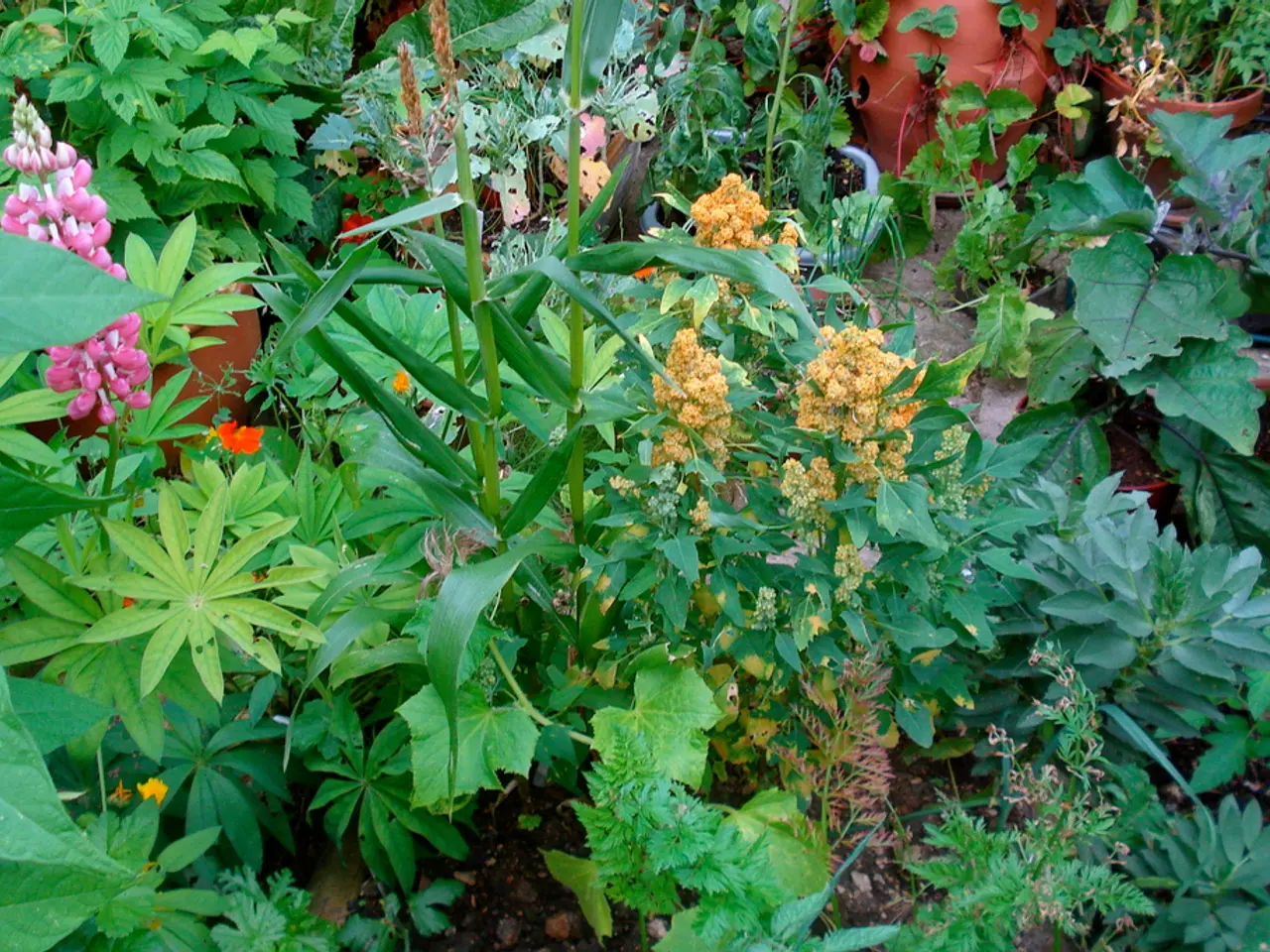Cultivation with Indigenous Soil: A Handbook for Flourishing Gardens
In the world of gardening, a little care and attention can go a long way. Here are some tips to help you plant and care for your native plants, whether in your garden or in containers.
Firstly, it's essential to avoid using a cement-soil mix when planting. This combination can lead to a plant disaster. Instead, when preparing the soil for garden or ground bed planting, rely on natural soil conditions with minimal disturbance. Lightly loosen the soil to maintain its structure, supporting native plants' adaptation and healthy root growth.
For container planting, layer broken clay or small rocks at the bottom, followed by a mix of potting soil and organic compost. Ensure the container has drainage to prevent waterlogging.
When planting, clear any existing roots from the hole and arrange the roots so they point outward. Ensure the plant is placed at its original depth. For roses, dig a hole slightly larger than the root ball and backfill it with the native soil that was dug out. After planting, water the plant thoroughly to settle the soil and eliminate air pockets.
Mulching is recommended just after planting to help conserve moisture and keep weeds at bay during the first year. During the second and third year, your planting should fill in and not require additional water from the third year onwards. However, for the first two weeks, water daily as the roots become established. After the first two weeks, if the soil is moist, no additional water is required. To check the soil moisture, dig at least 4 inches below the surface.
Weed control is critical for the long-term health of your native plants. Pull young weeds before they go to seed or spread. Fallen leaves in garden beds provide year-round habitat for snails, insects, salamanders, moth cocoons, and many other animals. Leave the leaves through winter and spring to support the web of life in your yard.
Caring for your plants also includes pruning. Cutting back, or giving your plants a "spring haircut," is a technique to keep leggy plants more compact. In spring, cut back dead foliage, but resist cutting all stems to the ground. Instead, cut them down at varying heights to provide nesting areas for cavity-nesting bees.
Deadheading, or removing faded flowers, encourages a second flush of blooms. Leaving spent stems standing provides places for bees to hibernate and seed heads for birds to feed on during winter.
Lastly, remember not to fill the hole with store-bought soil and be gentle when handling your plants. Loosen the plant plugs from the packaging, being careful not to hold or pull them by the stems. Shovel dividing is a maintenance practice to keep vigorous perennials within their allotted space.
By following these tips, you'll be well on your way to a thriving garden or container planting. Happy gardening!
Read also:
- Budget cuts at federal and state levels jeopardize advancements in fighting HIV and AIDS within Dallas County
- Strategies for Maintaining and Boosting Physical Activity as You Grow Older
- Understanding Prediabetes: A Precursory Condition to Diabetes
- Strategies for Strengthening a Nigerian Infant's Immune System







